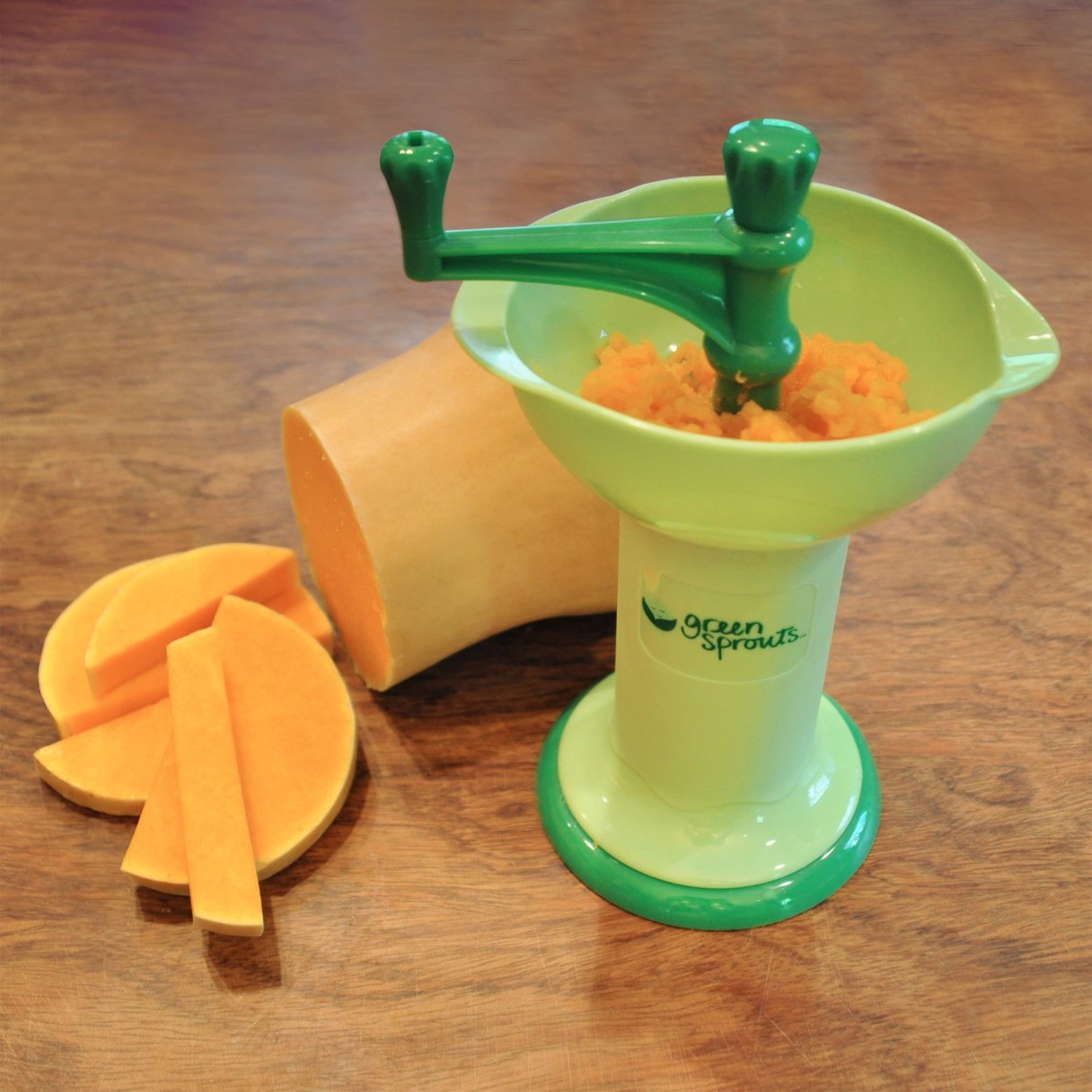I love midsummer. Strawberries are ripe and raspberries will be ripe soon. Farmer’s markets are buzzing. This is the time to think about turning some of your harvest into nutritious food for your baby.
I have a few tips if you are about to make your own baby food for the first time.
Homemade Baby Food Tip #1. Baby eats what the family eats.

To keep things simple, I didn’t generally make separate meals for my baby. I would just take a bit of the vegetable or fruit I served for the rest of the family and cook it longer for the baby until it was soft enough to mash with a fork. This is what my older child called “mushy food.” This works well with carrots, asparagus, squash, potatoes, peas, and, of course, strawberries, raspberries, and other fruits that can be cooked or mashed raw.
For some tougher foods, you may want to use a baby food grinder.
Homemade Baby Food Tip #2. Ice cube trays.
My kids wouldn’t eat enough of the same thing all at once to eat it all fresh. To keep things interesting for my baby, I would freeze what I couldn’t use within a couple of meals. The trick is to use an ice cube tray to freeze the puree. After the puree is frozen, empty the cubes into a freezer container and label it with date and type of food. If you make quite small cubes, you have more flexibility how much you use, so you will waste less. On nights when the family was eating vegetables the baby couldn’t really eat, like salad, I would heat up a couple of different kinds of cubes.
For an even trickier trick with fruit, which I didn’t want to heat up, I used interesting shaped cubes that got my child’s attention. I have stars, fruits, and long sticks. I let them thaw a bit so they would break up easily as my baby sucked on them.
Homemade Baby Food Tip #3. Keep a food journal.
Keep a record of any new foods you introduce to your baby. This is especially important if other family members have food sensitivities. Start with a small amount of any new food, then write it down in the food journal. I kept a small notebook near my spot at the table, so I wouldn’t put off recording foods. Don’t introduce new foods too quickly – no more than one new food every 3-4 days to give yourself a chance to observe any reactions.
The mushy food stage doesn’t last long, and it’s easy to integrate baby’s eating with the rest of the family’s. Good luck turning your harvest into great baby food.
